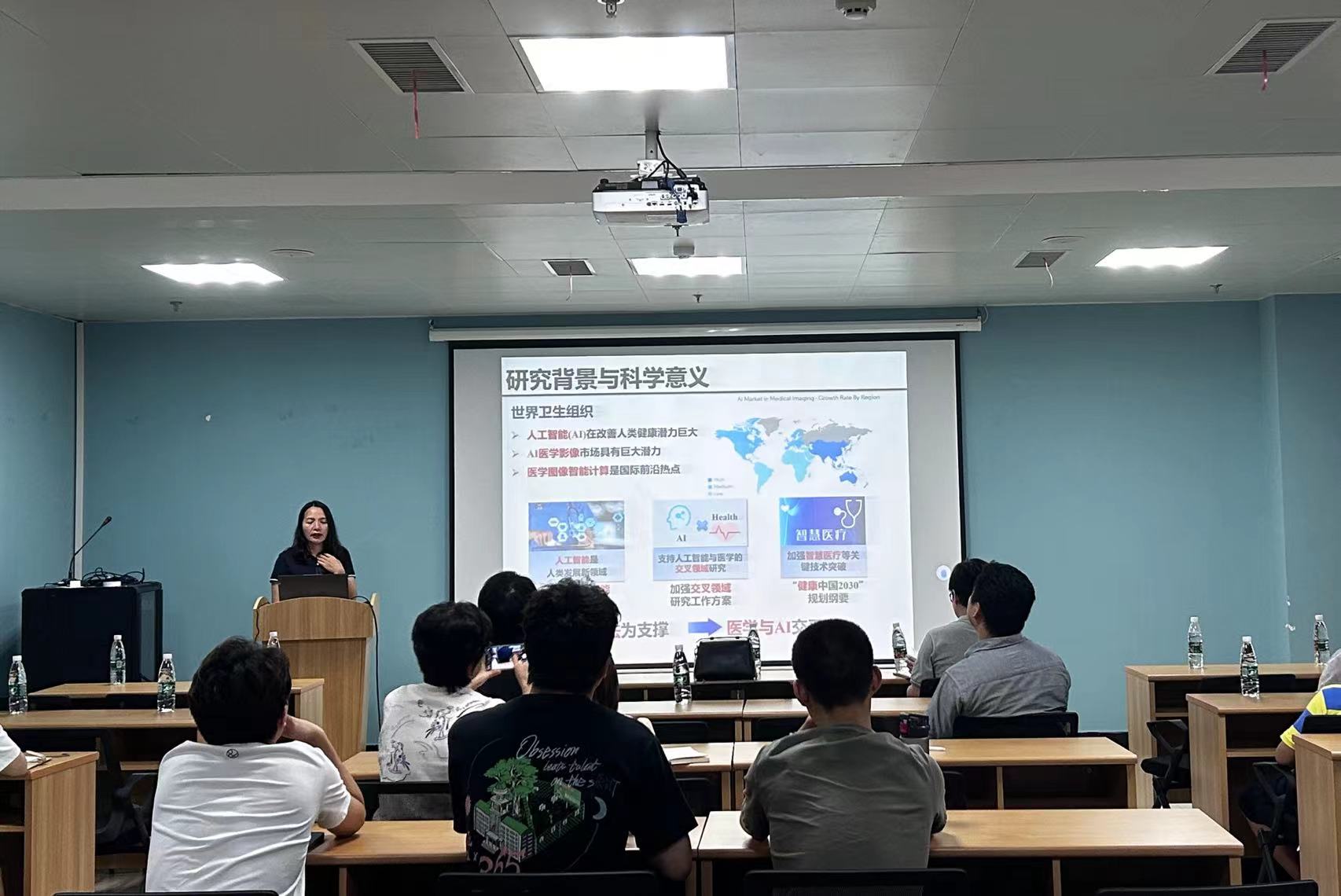

Professor Baiying Lei from Shenzhen University Visited APM
On August 22, 2024, Professor Baiying Lei from Shenzhen University was invited by the Ultrasensitive Magnetic Resonance Research Group to give an academic report entitled "Artificial Intelligence Empowering Medical Image Analysis"The lecture was hosted by Associate Professor Sa Xiao.
Baiying Lei, a national-level young talent, is a specially-appointed professor at Shenzhen University, a guest professor at Xidian University, a doctoral supervisor, and a Shenzhen Overseas High-Level Talent (Peacock Plan). She holds a Ph.D. from Nanyang Technological University, Singapore. Her main research interests lie in medical image processing and artificial intelligence. She has published over 100 SCI papers (including 6 ESI highly cited papers and 1 hot paper) as the first/corresponding author (or co-author) in top journals such as IEEE TPAM, TMI, and MIA. Her Google Scholar citations exceed 10,000, with an H-index of 51. She has presided over over 20 projects, including one key project and two general projects of the National Natural Science Foundation of China (including 7 national-level projects). Currently, she serves as an editorial board member for 10 SCI journals, including IEEE TNNLS, TCYB, TMI, JBHl, and Medical Image Analysis. She is also a technical committee member of IEEE BISP, BIIP, BSP, BHI, and the domain chair of the top medical image conference MICCAI (2021-2023). As the WIE Chair of the IEEE Guangzhou Section, she is a program committee member for AAAI and IJCAI, two top A-class AI conferences. She has been listed as one of the "World's Top 2% Scientists" by Stanford University (2020-2023).
In her report, Professor Lei first introduced the three key problems faced by intelligent computing of medical images: low standardization, poor interpretability, and difficult representation. She then introduced the three aspects of multi-task collaborative interactive data learning guided by prior information, deep interpretable feature learning guided by multi-scale and multi-attention, and disease-guided multi-level and multi-network vertical fusion model learning. She explained how to use AI to accurately mine the complex information of medical images, achieve fast screening of medical images, correct judgment, and accurate diagnosis, thereby tapping the huge potential of artificial intelligence in improving human health and the medical imaging market.
Professor Lei's insightful and accessible presentation left a deep impression on the audience. After the report, Professor Lei engaged in in-depth discussions with teachers and students, further enhancing their understanding of AI-based medical image analysis.


Innovation Academy for Precision Measurement Science and Technology, CAS.
West No.30 Xiao Hong Shan, Wuhan 430071 China
Tel:+86-27-8719-8631 Fax:+86-27-8719-9291
Email:hanyeqing@wipm.ac.cn
鄂ICP备15017570号-1